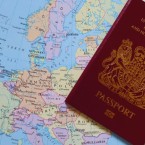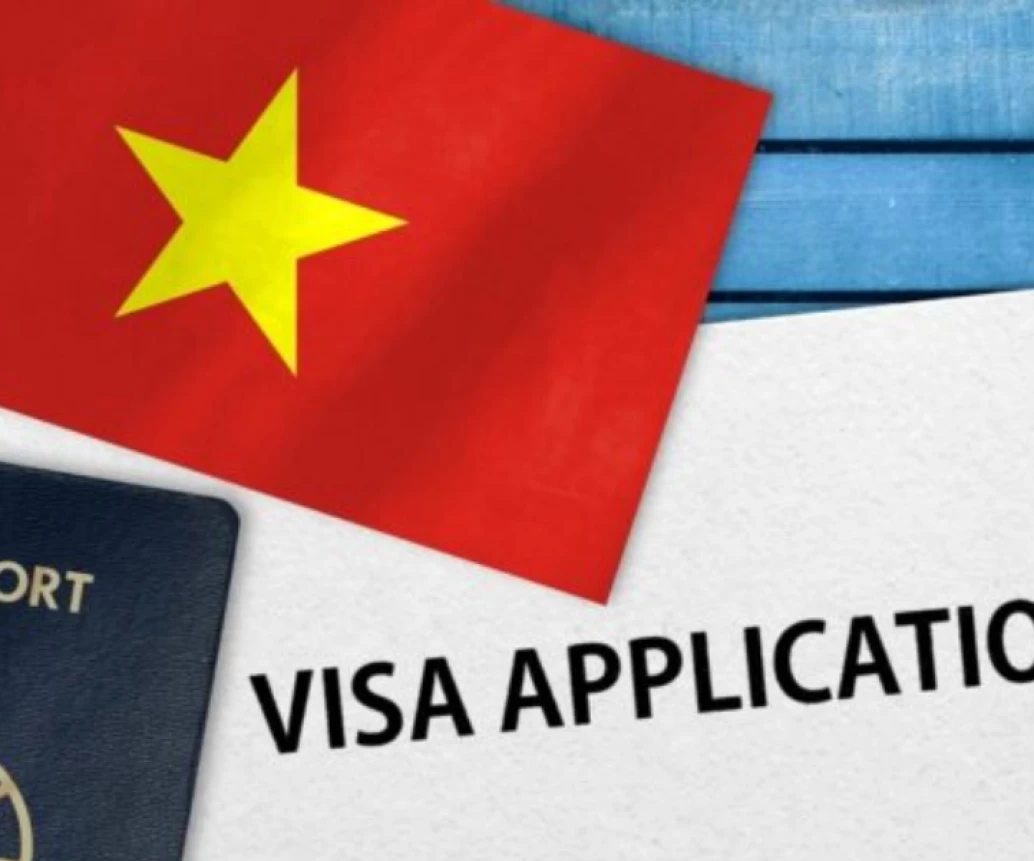
Everything You Need To Know About Vietnam Visas
Content []
If you are planning to visit Vietnam, understanding the visa regulations is the most important step. In this article, Auasia Travel will provide an overview of Vietnam visas, including application methods, submission processes, processing time, fees, and essential notes to keep in mind.
Table of Contents
1. What is a Vietnam Visa?
A visa, also known as an entry permit, is an official document issued by the competent authorities of Vietnam that allows foreign nationals to enter the country. Therefore, foreigners who wish to enter Vietnam must obtain a visa and other relevant documents as required, unless they are exempted under Vietnam’s visa exemption policies.
Depending on the type of visa and the applicant’s nationality, Vietnam currently offers four main types of visa issuance:
E-visa (electronic visa).
Visa on arrival
Visa issued at the Vietnamese embassy/consulate
2. Who Needs a Visa to Enter Vietnam?
According to current regulations, foreign nationals must have a valid passport (or an approved substitute document) and obtain an entry visa to enter Vietnam, except in cases where a visa exemption applies under bilateral or unilateral agreements with Vietnam.
2.1. Countries Required to Obtain a Visa
Citizens from the following countries need to apply for a visa to enter Vietnam: Afghanistan, Austria, Egypt, Algeria, India, Northern Ireland, Bangladesh, Belgium, Portugal, Brazil, Canada, Czech Republic, Taiwan, Cyprus, Timor-Leste, Ghana, Guam, Netherlands, Taiwan, Hong Kong, Iran, Iraq, Kuwait, Lebanon, Libya, Morocco, Macao, Malaysia, Mexico, USA, South Africa, Nepal, New Zealand, Nigeria, Pakistan, Marshall Islands, Romania, Sri Lanka, Turkey, Switzerland, China, Australia, Ukraine, Uzbekistan.
2.2. Visa-Exempt Countries
On June 24, 2023, the National Assembly of Vietnam approved amendments to the “Law on Entry, Exit, Transit, and Residence of Foreigners in Vietnam.” As of August 15, 2023, Vietnam unilaterally exempts visas for citizens of certain countries with a maximum stay of up to 45 days. The countries include: Russia, Japan, South Korea, Norway, Finland, Denmark, Sweden, the United Kingdom, France, Germany, Spain, Italy, and Belarus.
In addition, Vietnam maintains bilateral visa exemption agreements with 9 Southeast Asian countries, including: Brunei, Myanmar, the Philippines, Cambodia, Thailand, Malaysia, Singapore, Indonesia, and Laos.
Brunei and Myanmar: visa-free stay up to 14 days
Philippines: visa-free stay up to 21 days
Cambodia, Thailand, Malaysia, Singapore, Indonesia, Laos: visa-free stay up to 30 days
3. Ways to Apply for a Vietnam Visa
To save time and costs when applying for a Vietnam visa, follow these steps: Check if you need a visa to enter Vietnam. Then, proceed with the simplest method to apply for a Vietnam visa if you are not exempt.
3.1. Apply for an E-visa
Visit the official Vietnamese E-visa portal at https://thithucdientu.gov.vn/ to apply.
3.1.1. Entering visa declaration information
Step 1: Upload a recent portrait and biometric passport photo. Once uploaded, the system will automatically populate personal details from the passport. Users should verify and update any incorrect information. Please note: The photo must be a 4x6 cm, JPG or JPEG format, with a file size under 2MB. It should be a front-facing image without a hat or glasses, taken in formal attire, with a white background.
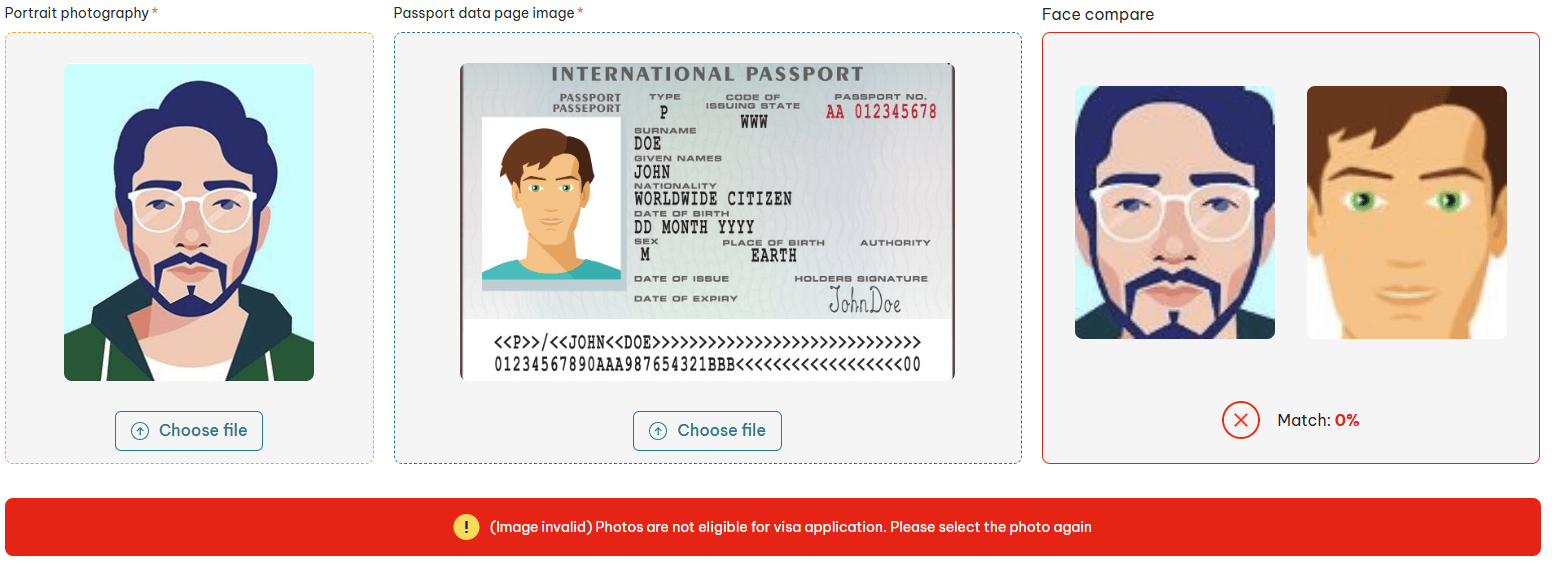
Step 2: The system will automatically verify the portrait and passport images. If valid, it will pre-fill the passport information fields. Users should review these auto-filled details, then complete all required fields (marked with), and any optional fields if applicable. If the passport photo is deemed invalid, the system will prevent users from submitting the application.


Step 3: Confirm the declaration information and proceed with the next steps.

3.1.2. Verifying declaration information
Step 1: Check entered information including mandatory fields and other optional fields (if any).
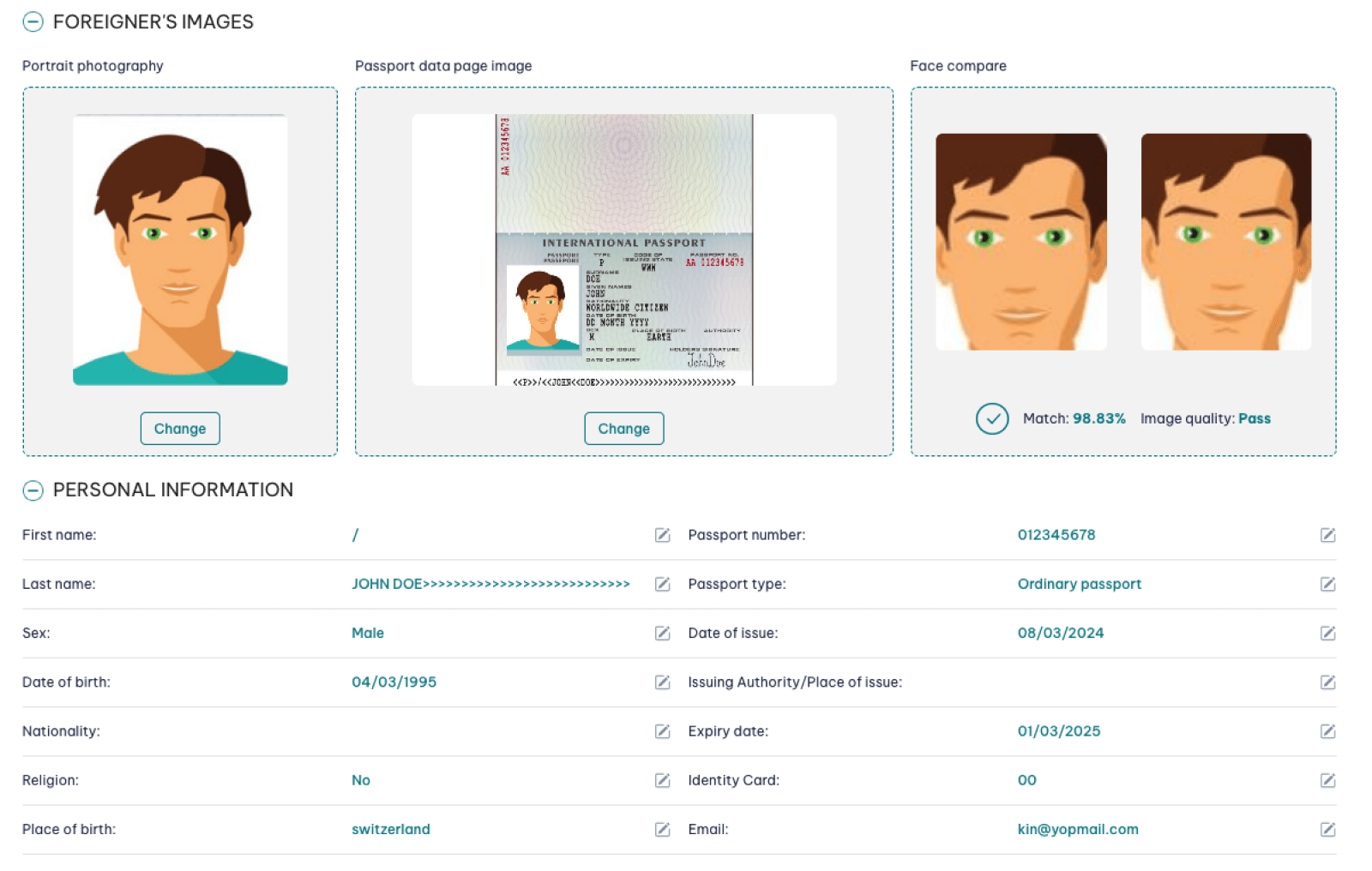
Step 2: Enter verification code and proceed.

3.1.3. Paying Application
Step 1: Check payment information

Step 2: Agree and Proceed to Payment
Step 3: Select payment method
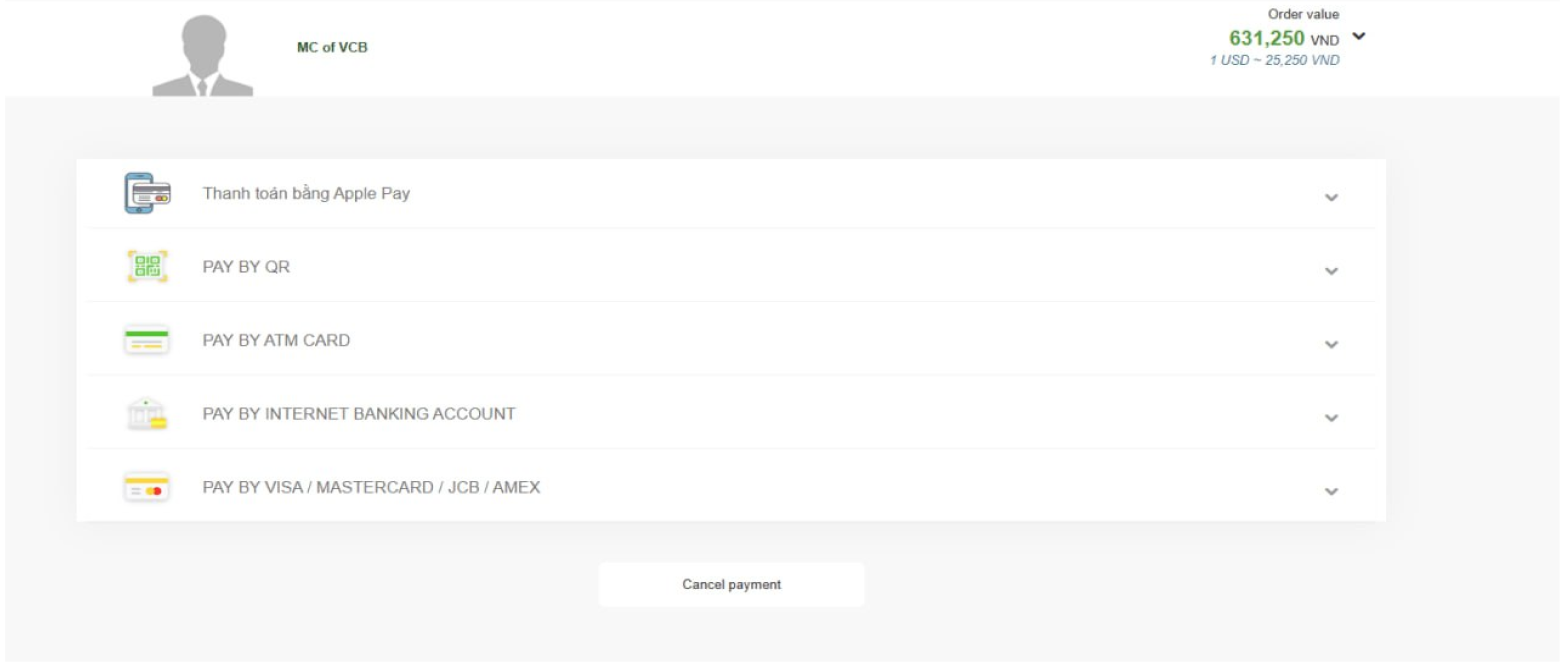
Step 4: Enter credit/debit card details
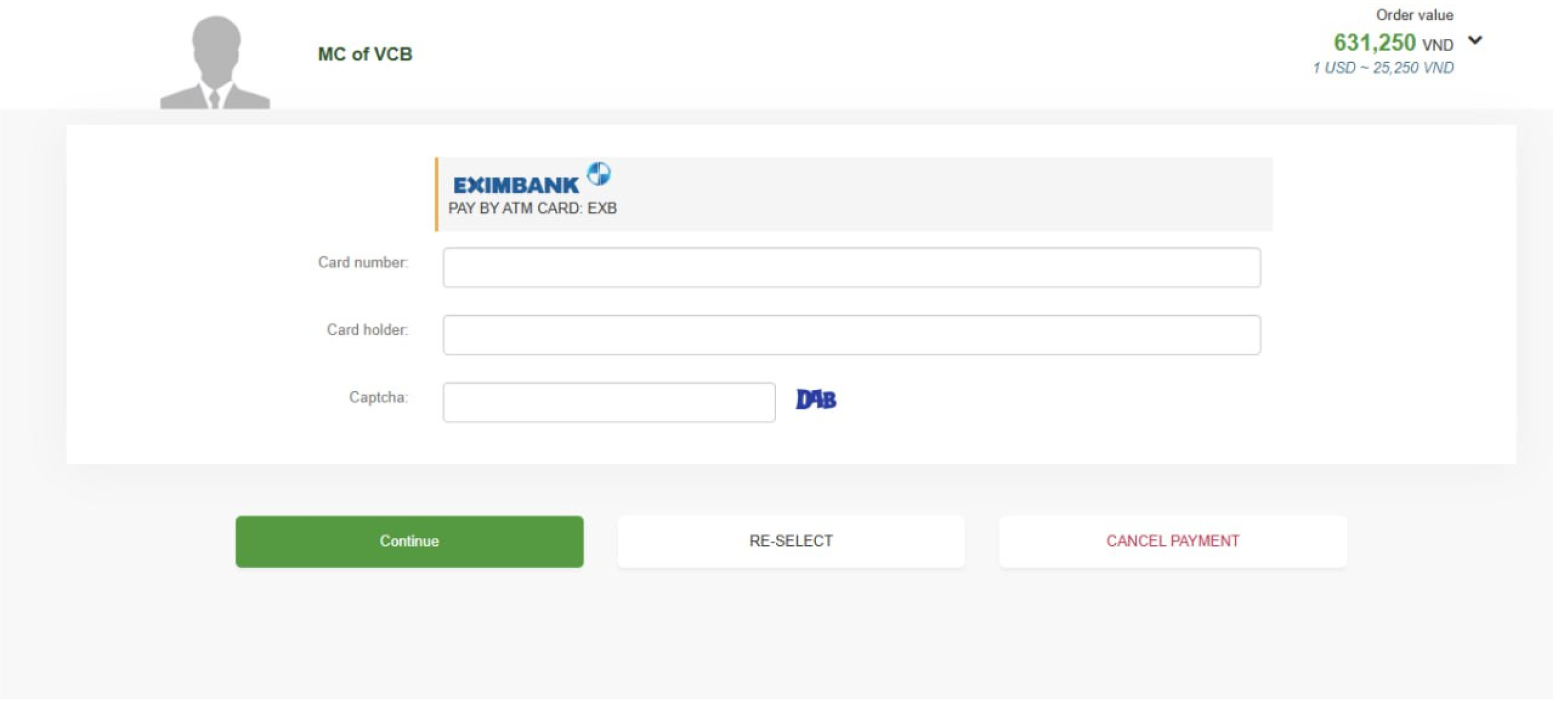
Step 5: Confirm the payment terms and conditions
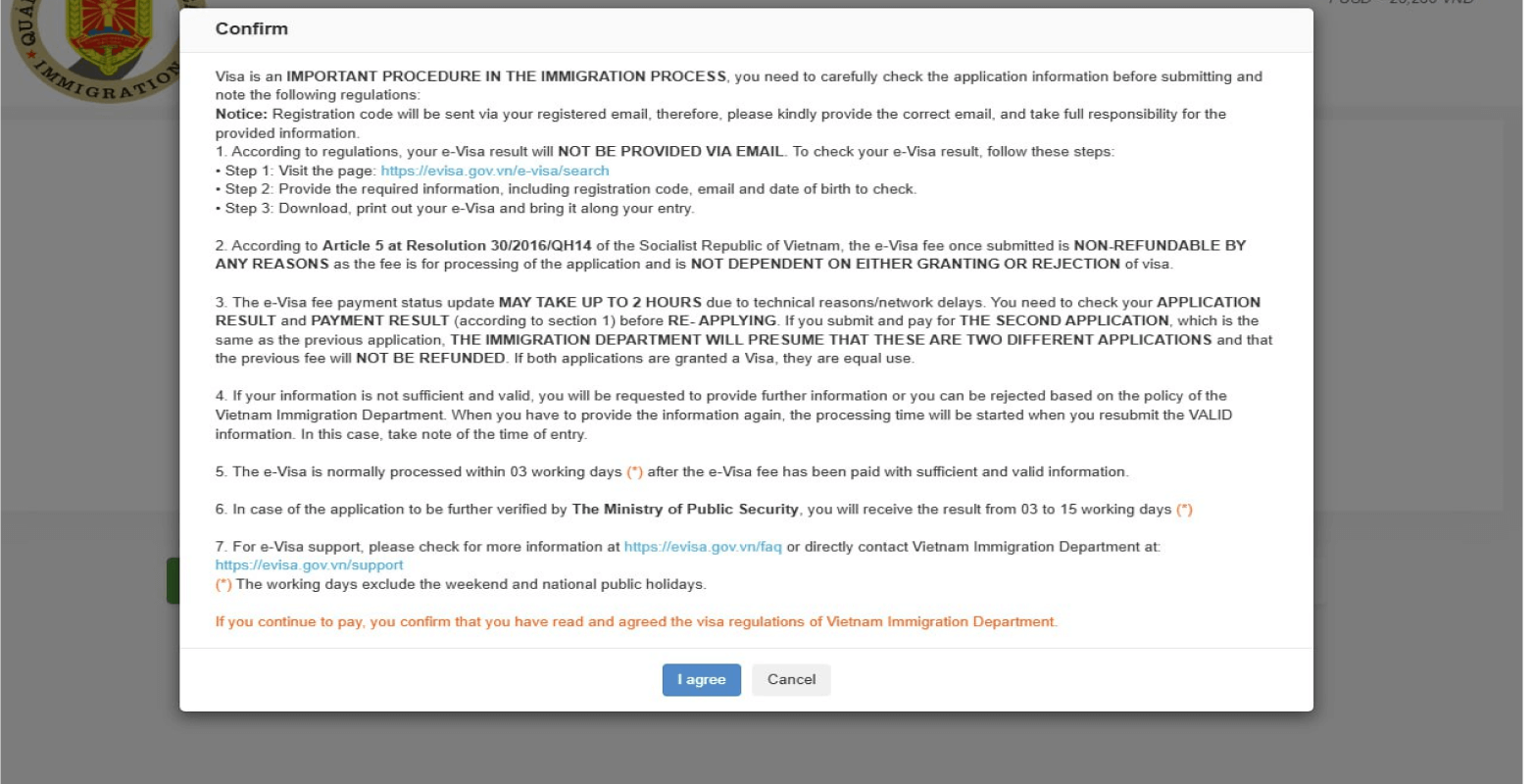
Step 6: Verify OTP
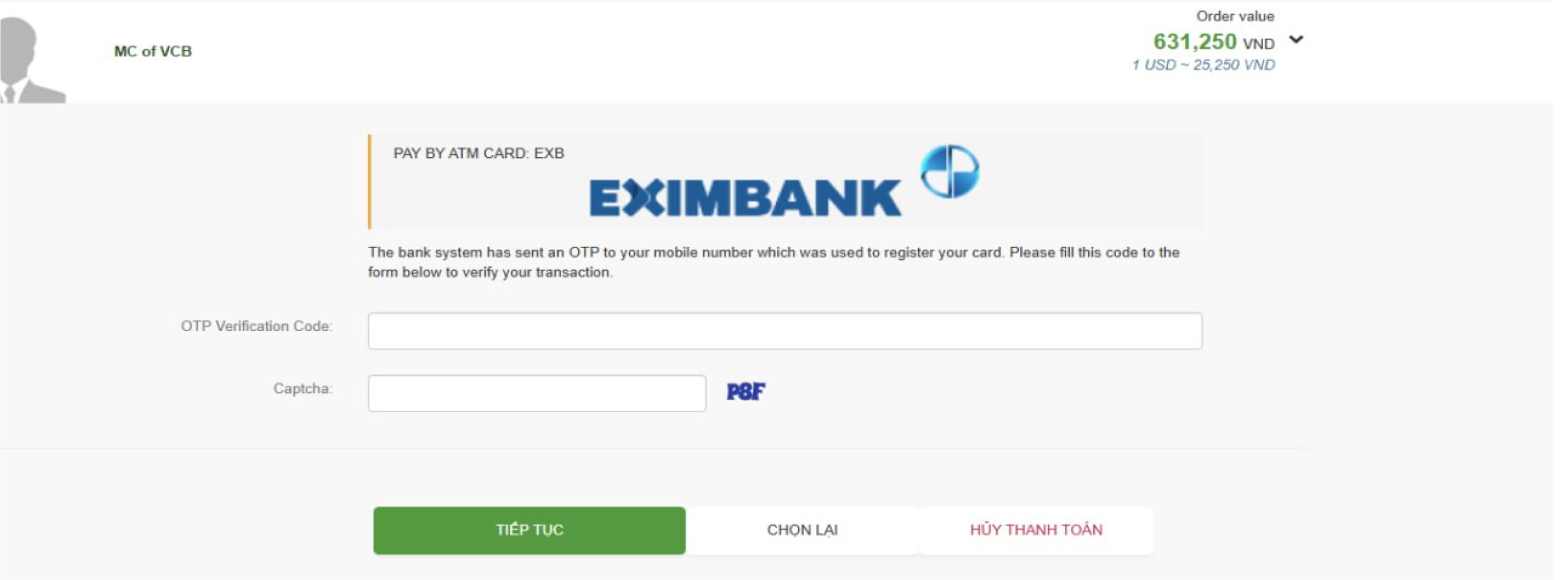
Step 7: Payment has been successfully processed
Important notes for applying for a Vietnam E-visa:
The applicant must be a foreign citizen who is not currently residing in Vietnam.
The passport used for the E-visa application must be valid at the time of submission.
The applicant must not fall under any of the prohibited entry cases specified in Article 21 of the Law on Entry, Exit, Transit, and Residence of Foreigners in Vietnam.
3.2. Apply for a Visa at the Vietnamese Embassy or Consulate
3.2.1. Find a Visa issuance authority
Locate the nearest Vietnamese Embassy or Consulate to your residence. Each embassy or consulate may have specific requirements for documents and appointments, so it’s recommended to contact them in advance or visit their official website.
3.2.2. Prepare the required documents according to instructions
When applying for a Vietnam visa, citizens need to prepare a complete set of documents to ensure a smooth application process. Below is a list of necessary documents:
Passport: The passport must be valid for at least 6 months from the intended entry date and have at least one blank page for the visa sticker.
Visa application form: Complete the visa application form, which can be downloaded from the Vietnamese Embassy or Consulate's website. Ensure that personal information such as name, date of birth, and nationality is accurately filled out.
Passport photo: Provide 1-2 recent color photos (4×6 cm), clear, with a white background, and without sunglasses or facial accessories.
Proof of ourpose of visit: Depending on the type of visa, you may need to provide additional documents Travel itinerary and hotel booking for a tourist visa.
Visa fee: Prepare the visa application fee, which can typically be paid in cash or via bank transfer, depending on the embassy’s or consulate’s requirements.
Visa request letter (if applicable): In some cases, a letter explaining the reason for the visa request may be required, especially if you have a complex travel history.
3.2.3. Submit the documents and wait for approval
Once you have prepared all the necessary documents, you can submit them in person or mail them to the nearest Vietnamese Embassy or Consulate. The usual processing time is 3 to 5 business days, but it may take longer if further verification is required.
3.2.4. Receive the result
Once approved, the visa will be affixed to your passport and returned to you via the method you selected (in person or by mail).
3.3. Visa on Arrival
A Visa on Arrival is a type of visa issued to travelers when they arrive at the airport of the country they wish to enter, instead of applying for a visa in advance at an embassy or consulate.
In Vietnam, this type of visa is particularly popular with international travelers from countries that require a visa to enter. However, the mandatory condition is that the traveler must enter Vietnam by air and must have an approval letter for the visa issued in advance by the Vietnam Immigration Department.
Here are the 3 simple steps to apply for a Visa on Arrival in Vietnam:
Step 1: Submit an online visa application.
Step 2: Receive the visa approval letter via email, then print it out. Additionally, prepare the Immigration Declaration Form, 2 passport-sized photos (4x6 cm), the original passport, and the required visa stamp fee in cash.
Step 3: Present the documents to the Visa on Arrival counter (VOA) at the Vietnamese airport and pay the visa stamp fee to have the visa affixed to your passport.
Notes:
To apply for a Visa on Arrival in Vietnam, travelers must have the visa approval letter before departing for Vietnam.
The Visa on Arrival is only available for travelers entering Vietnam by air. If travelers are entering Vietnam by land or sea, they must apply for a visa at an Embassy or through e-visa (if eligible) before departing.
To enter Vietnam, the traveler’s passport must be valid for at least 6 months from the date of entry.
The visa fee for children with their own passports is the same as the fee for adults.
4. Processing Time
4.1. E-visa
Application reception time: From Monday to Saturday morning every week (excluding public holidays and Tet holidays).
Result delivery time: From Monday to Friday every week (excluding public holidays and Tet holidays).
Processing time: No more than 3 working days from the date of receiving the complete E-visa application and payment.
4.2. Visa through Embassy/Consulate
Application reception time: During the working hours of each Vietnamese Embassy/Consulate in the host country (usually from Monday to Friday, excluding public holidays in Vietnam and the host country).
Result delivery time: Typically 5 to 7 working days from the date of receiving the complete documents (can be faster if urgent service is requested).
Note: Processing times may vary depending on the country, visa type, and the internal procedures of the diplomatic mission.
4.3. Visa on Arrival
Visa approval letter processing time:
For tourist visas: About 1 to 2 working hours after submitting the online application (excluding Saturdays, Sundays, and public holidays).
For business visas: About 2 to 7 working days from the date of submission of complete documents.
Visa pickup time at the airport: Immediately upon arrival at the international airport in Vietnam, after presenting the approval letter, passport, photos, immigration declaration form, and paying the visa stamp fee.
5. Visa Fees for Vietnam
5.1. E-visa
- Single-entry visa: 25 USD per E-visa
- Multiple-entry visa: 50 USD per E-visa
5.2. Visa through Embassy
Visa fees: Depends on the type of visa, duration, and nationality of the applicant. Fees can range from 40 USD to over 100 USD.
Payment methods: As per the regulations of each Vietnamese diplomatic mission (usually by cash, bank transfer, or bank check in the host country).
5.3. Visa on Arrival
Service fee for obtaining the visa approval letter (paid to the intermediary agency): This fee varies depending on the type of visa, processing time, and the service provider you choose.
Stamping fee at the airport in Vietnam: 25 USD for single-entry visa and 50 USD for multiple-entry visa.
6. Important Notes When Applying for a Vietnam Visa
Your passport must be valid for at least 6 months from the date of entry into Vietnam.
The purpose of your trip (tourism, business, visiting relatives, etc.) must match the type of visa you apply for. Mismatched purposes may result in denial of entry or legal issues.
All declared information must be accurate and consistent.
Personal details, passport number, date of birth, and destination must be consistent across your visa application, passport, and flight ticket (if applicable).
Visa on arrival requires a prior visa approval letter. Without this letter, you will not be allowed to board the flight, even if you plan to obtain the visa at the airport.
Each visa type has a different processing time. To avoid risks, it is recommended to apply at least 7–10 days before your planned departure date.
Understanding the visa requirements for entering Vietnam is crucial to ensuring a smooth immigration process. Whether you choose to apply for an e-visa, a visa on arrival, or a visa through a Vietnamese embassy, following the correct steps and preparing the necessary documents is very important. Wishing you success in obtaining your visa and a memorable trip to Vietnam!
Tags:
Read this next
Quick Contact
WHAT DO CUSTOMERS SAY ABOUT US?
See Real Experiences from Our Travelers




